 | Webster Wells - Geometry - 1886 - 392 pages
...THEOREM. 249. In any proportion the terms are in proportion by COMPOSITION AND DIVISION ; that is, the sum of the first two terms is to their difference as the sum of the last two terms is to their difference. Let a : b = c : d. Then by §247, = . (i) ct c And by §248, ^ = ~ (2)... | |
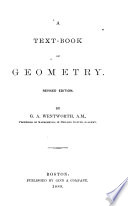 | George Albert Wentworth - Geometry - 1888 - 272 pages
...PROPOSITION VIII. 302. In any proportion the terms are in proportion by composition and division; that is, the sum of the first two terms is to their difference as the sum of the last two terms to their difference. Let a : 6 = c : d. Then, by §300, a + b =c±d_ ac And, by § 301, By division,... | |
 | Webster Wells - Algebra - 1889 - 584 pages
...— d:d. 317. In any proportion the terms are in proportion by Composition and Division ; that is, the sum of the first two terms is to their difference, as the sum of the last two terms is to their difference. Let a : b = с : d. Then by Art. 315, = (1) ac And by Art. 316, ±ZJ?... | |
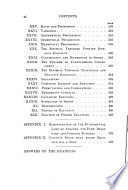 | Webster Wells - Algebra - 1890 - 560 pages
...— d:d. 389. In any proport,on the terms are in proportion by Composition and Division ; that is, the sum of the first two terms is to their difference as the sum of the last two terms is to their difference. Let o : 6 = c : d. Then by Art. 387, 2 = ! (1) O1 C And by Art. 388,... | |
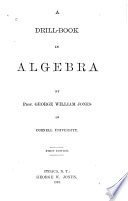 | George William Jones - Algebra - 1892 - 300 pages
...second as the difference of the last two terms is to the third term or the fourth. [division. COR. 1. The sum of 'the first two terms is to their difference as the sum of the last two terms is to their difference. COR. 2. The sum of the antecedents is to their difference as the sum... | |
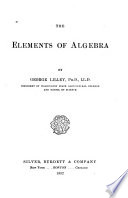 | George W. Lilley - Algebra - 1892 - 420 pages
...they will be in proportion by composition ала division; that is, the sum of the first two will be to their difference as the sum of the last two is to their difference. Let a : 6 : : с : d, e : f :: g : h, k : I :: m : n. ,,,,... acegkm By definition, , = j, -f— т,... | |
 | George Albert Wentworth - Geometry - 1888 - 466 pages
...proportion the terms are in proportion by composition and division; that is, the sum of the first tico terms is to their difference as the sum of the last two terms to their difference. Let a : b = c : d. Then, by § 300, And, by § 301, By division, ac a±*=£±4... | |
 | George P. Lilley - Algebra - 1894 - 522 pages
...proportion, they will be in proportion by composition and division; that is, the sum of the first two will be to their difference as the sum of the last two is to their difference. Let a : b : : с : d, e : f ':: g : h, k : l :: m : n. , - , , a ce gkm By definition, т = j, >= v,... | |
 | George Albert Wentworth - Mathematics - 1896 - 68 pages
...fourth term. 302. In any proportion the terms are in proportion by composition and division ; that is, the sum of the first two terms is to their difference as the sum of the last two terms to their difference. 303. In a series of equal ratios, the sum of the antecedents is to the sum... | |
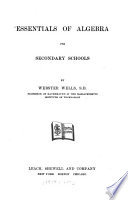 | Webster Wells - Algebra - 1897 - 422 pages
...— rl:rl. 314. In any proportion, the terms are in proportion by Composition and Division ; that is, the sum of the first two terms is to their difference as the sum of the last two terms is to their difference. Let the proportion be a : b = с : d. Then by §312, a + Ь = c±d> (... | |
| |